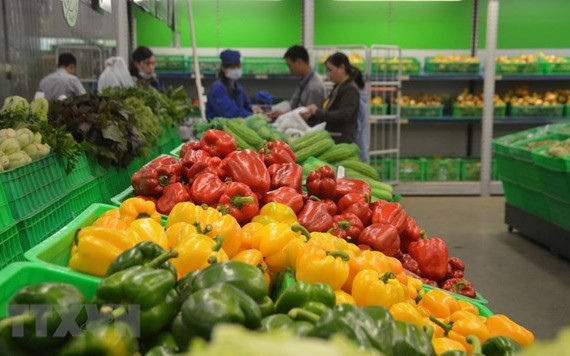According to Deputy Director of the Department of Crop Production (Ministry of Agriculture and Rural Development) Le Thanh Tung, the total annual vegetable output of the Southern provinces is currently more than 10 million tonnes. Of which, output in the first quarter was mostly concentrated in January, accounting for more than 60% of total output.
According to calculations, if each person consumes about 10 kg of vegetables per month, excess vegetable output in the first quarter of 2022 will be about 2.5 million tonnes. This quantity will need to be processed.
Regarding fruit trees, dragon fruit trees produce the highest yield of about 1.4 million tonnes per year. They is followed by bananas (over 1 million tonnes), mangoes (more than 800,000 tonnes), and durians (more than 600,000 tons). In the first three months of 2022, dragon fruit, jackfruit, pomelo, banana, and mango will be under the greatest pressure in terms of consumption and may need support in the near future.
Data from the Department of Agriculture and Rural Development of Gia Lai province shows that about 1,600 tonnesof local watermelons have been affected by congestion at the border gates to China, causing prices to fall down to only 2,000-3,000 VND per kg. Another key agricultural product of the province is dragon fruit, with an estimated volume of about 3,000 tonnes, which is also mainly exported to China.
In the provinces of Binh Thuan, Long An, and Tien Giang, the total output of dragon fruit which needs to be consumed in the first quarter of 2022 is up to 226,400 tonnes, including 147,500 tonnes to be exported.
Although the output of fruit is mainly in the Mekong Delta provinces, this area has too few preliminary and deep processing facilities, so the fruit is mainly sold in the form of fresh fruit, increasing pressure on consumption. The pressure is higher during the harvest season because the volume of fruit is very large and if there is any risk from the market, it will also lead to congestion of fruit and stagnation in consumption.
In order to deal with the consumption of vegetables and fruit, it is necessary to have a production plan according to each sub-region which will provide forecasts on production and quality, grant planting area codes and packing codes, build consumption plans, connect enterprises, and step up processing technology, especially deep processing.
Director of the Department of Agricultural Products Processing and Market Development Nguyen Quoc Toan said that Vietnam's annual fruit and vegetable production capacity is 28 million tonnes, but the level of processing technology is only intermediate with 237 processing facilities. The capacity for the preliminary processing of vegetables and fruits is about 30%.
This is the weak moment, leading to a large surplus of vegetables and fruits when they are harvested at the same time in localities. To solve this problem, it is important for enterprises to strengthen their processing capacity. In addition, another big issue is that the processing capacity of plants has currently only reached about 60% due to insufficient input materials.
Therefore, producers and cooperatives must adhere to safe production standards according to standards and requirements of purchasing units to ensure standardised input materials, helping processing factories to improve operating capacity.
On the other hand, the export of fruit to the Chinese market has encountered many difficulties in recent times with thousands of container trucks stuck at border gates in the northern provinces. This problem has sounded the alarm to change export methods from unofficial to official channels.
At the same time, it is advisable to focus on the domestic market with the increasing demand for vegetables and fruits and to promote exports to many other markets such as Japan, Australia, and India. In addition, the diversification of consumption forms also needs to be further promoted through online channels and e-commerce platforms which have worked well during the COVID-19 outbreak.
















